
Organic Fertilizer Production Line
The organic fertilizer production line is a system that uses crop waste, organic solid waste, animal manure, urban food waste and other raw materials to produce efficient “organic matter, pollution-free” fertilizer.
The products processed by this fertilizer pellet line can turn waste into treasure while improving the soil environment and promoting the cyclic development of healthy organic agriculture.



The organic fertilizer production line is a complete set of production equipment that uses manure or agricultural and forestry waste, kitchen waste as raw materials and undergoes a series of processing to produce organic fertilizer.
The supporting equipment of the organic fertilizer production line requires fermentation compost turner, organic fertilizer crusher, mixer, fertilizer granulator, rotary dryer, cooler, screening machine, packaging machine, conveyor and other equipment.
Richi Machinery, 30 years of industry experience.
As a high-tech enterprise with great growth potential in the industry, we focus on the design, manufacturing and installation services of organic fertilizer production line projects, and have formed a business covering animal manure, urban kitchen food, crop waste, organic solid waste, etc. as raw materials with the cutting-edge technology of resource-based fertilizer recycling projects, we are committed to tailoring personalized solutions for fertilizer machinery and complete sets of projects for global customers.
- Output: 1-60 t/h
- Cost: 50,000 – 3,000,000 USD
- Product types that can be processed:fertilizer powder and pellets
- pellet size: 2-12 mm (customizable)
Organic fertilizers can not only provide comprehensive nutrition for crops, but also have long-lasting fertilizer effects. They can increase and renew soil organic matter, promote microbial reproduction, and improve the physical and chemical properties and biological activity of soil. They are the main nutrients for green food production.
With the advancement of organic fertilizer production line technology and the development of social productivity, efficiency, energy conservation, and environmental protection have become important issues of global concern. The organic ecological agriculture model has emerged as the times require and has become one of the industries with great development prospects in recent years.
Types of organic fertilizer production lines
There are many types of organic fertilizers, including human waste, manure, compost, green manure, cake fertilizer, biogas fertilizer, etc. These fertilizers come from a wide range of sources and are made in different ways, but they all have one thing in common, that is, they are rich in organic matter, which can provide nutrients needed by plants and improve soil properties.
- Feces organic fertiliser pelletizing plant: Applicable raw materials include human feces, livestock feces, chicken manure, cow dung, horse manure, goat manure, poultry feces, etc.
- Compost organic fertilizer line: Applicable raw materials include compost, straw fertilizer, biogas residue fertilizer, etc.
- Green organic fertilizer manufacturing machine line: Applicable raw materials include cultivated green manure and wild green manure.
- Cake fertilizer organic fertilizer manufacturing plant: Applicable raw materials include bean cake, rapeseed cake, cottonseed cake, sesame cake, etc.
- Sludge organic fertilizer granule production line: Applicable raw materials include silt, river mud, pond mud, etc.
- Humic acid organic fertilizer pallet production line: Applicable raw materials include humic acid, lignite, weathered coal, etc.




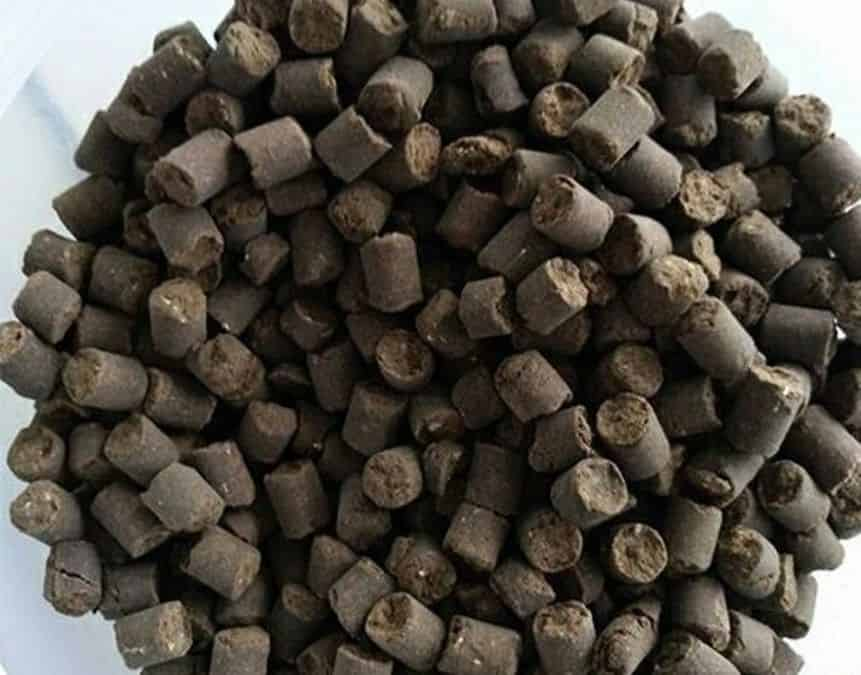
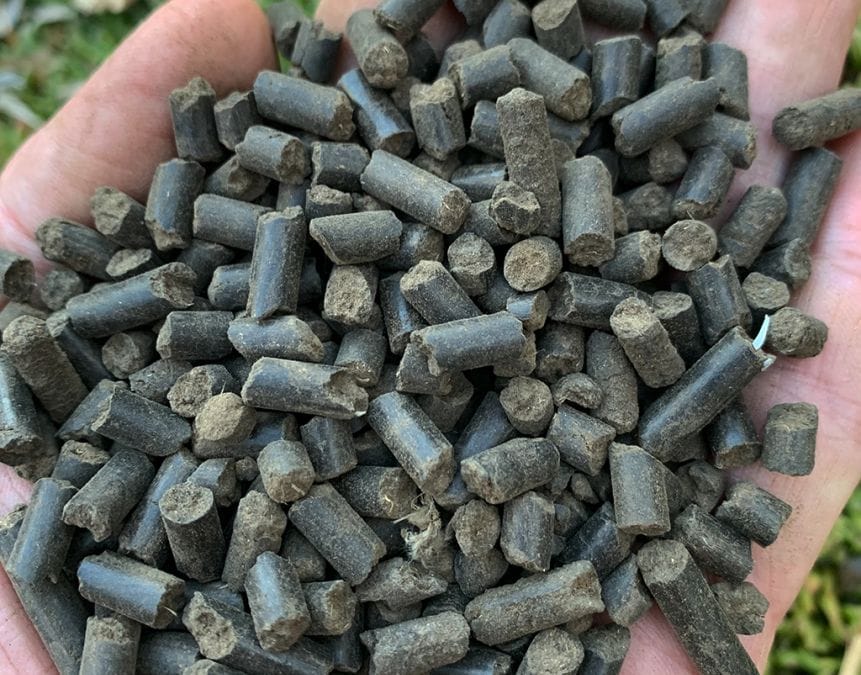
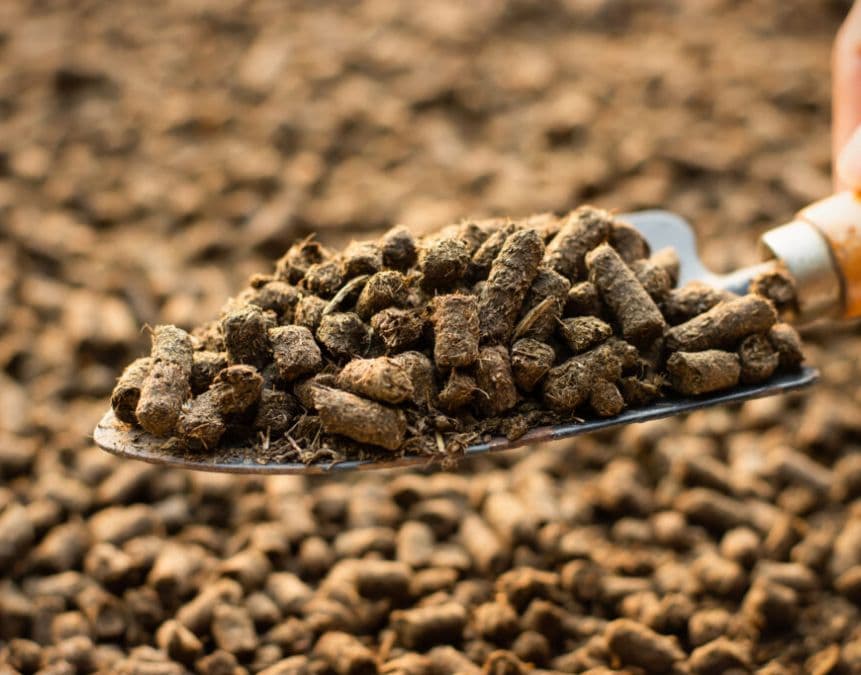

Technical characteristics of organic fertilizer production line
The design of the RICHI compost organic fertilizer pellet production line adopts advanced granulation technology and takes into account: the simplicity and smoothness of the process flow, the humanization of the equipment layout, the full utilization of the site space, the mechanized operation during equipment maintenance, and the safety of the production environment. Hygiene, mature use of new technologies, etc.
- Many practical improvement technologies are adopted throughout the production system. For example: door replacement and cleaning method of crusher, enlarged tail cover design of dryer and cooler, nearby access to dust removal system, etc.
- Using low-temperature drying technology to ensure the activity of microorganisms in organic fertilizers; large output, low energy consumption, and low cost.
- Making operations simpler and more convenient while minimizing manpower. Make the equipment run more stably while minimizing losses. The concepts of people-oriented and production first are reflected in many technical reforms.
- The fertilizer pellet line equipment adopts advanced production technology to produce uniform particles; it adopts counter-flow cooling method with high efficiency.
- 30 years of production and processing experience, precision processing instruments, and professional installation and maintenance team.
- Has more than ten patented technologies, and all products have passed ISO quality system certification and CE European certification.
We can customize different plans according to customer needs and produce organic fertilizers in different forms, including powder, columnar pellets, spherical pellets, etc.
RICHI fertilizer pellet production line is mature, stable, efficient and low-consumption. It can be made into high-quality organic fertilizer finished granules through the process of raw material receiving, mixing, granulating, drying, cooling and screening, and packaging.
Process flow of organic fertilizer production line
RICHI organic fertilizer pellet line is scientifically planned and directionally designed. After fermentation and tumbling, pre-treatment section, crushing, mixing, granulation, cooling screening, packaging and other processes, the finished organic fertilizer pellets are uniform and full, improve market competitiveness for customers.

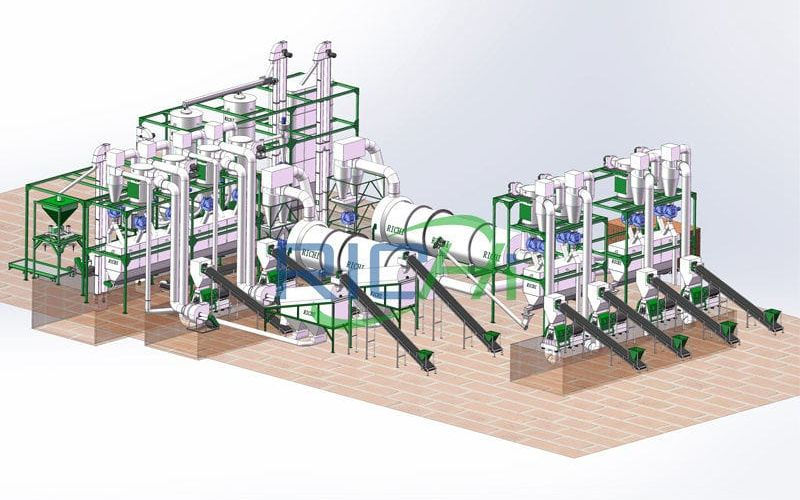
Fermentation and turning section
We scientifically configure single machines or large organic fertilizer equipment according to the requirements of different process plants to ensure that materials are turned over deeply and fermented evenly. It adopts hydraulic driven lifting mechanism and automatic integrated electronic control system, which is advanced, flexible and easy to operate.
Pretreatment section:
The fermented organic fertilizer raw materials are crushed, screened and dried.
The crushing process uses high-strength and wear-resistant carbide chain plates with synchronous rotation speed, which greatly improves the service life. The crushed materials are even and difficult to stick to the wall, making it easy to clean.
The uniquely designed drying structure improves heat energy utilization while reducing energy consumption. After drying, the moisture content of the raw materials is effectively reduced to 20%, and the drying effect is excellent.
Crushing section:
The crushing equipment adopts advanced rotor design, which can quickly replace hammer blades and accurately position them, saving time and effort; specially processed parts have good wear resistance and increased service life.
Mixing section:
The material is mixed efficiently, evenly and without residue. It can be made of stainless steel, with scientifically designed seals and paddle arrangements, low energy consumption and easy maintenance.
Granulation section:
A special granulator for fertilizers is selected, independently developed and optimized based on the characteristics of fertilizer granulation, which greatly improves the output and molding rate; it is equipped with imported bearings and oil seals for smoother operation.
Cooling and packaging section:
The temperature of the cooled material can be monitored in real time, and the optimally designed cooling air network ensures the predetermined cooling effect. The efficient and reliable screening system enables the finished product to meet the needs of customers and the market.
Packaging section:
A new generation of intelligent weighing, packaging and palletizing system, with large and small packages to choose from, can realize automatic weighing, automatic zero elimination, automatic alarm, etc., saving manpower and material resources.
Electronic control system:
It has a high degree of automation, with computer full-screen control or simulated screen centralized control system and real-time monitoring, allowing you to know the operation of factory equipment at any time.
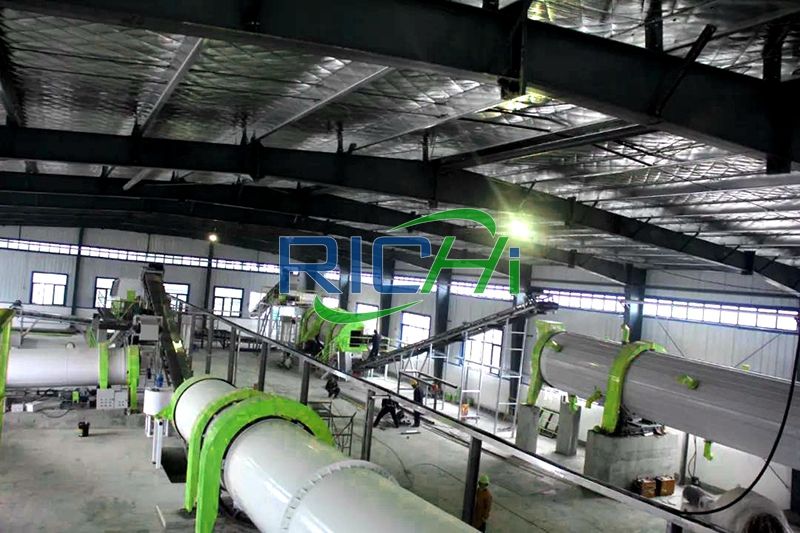
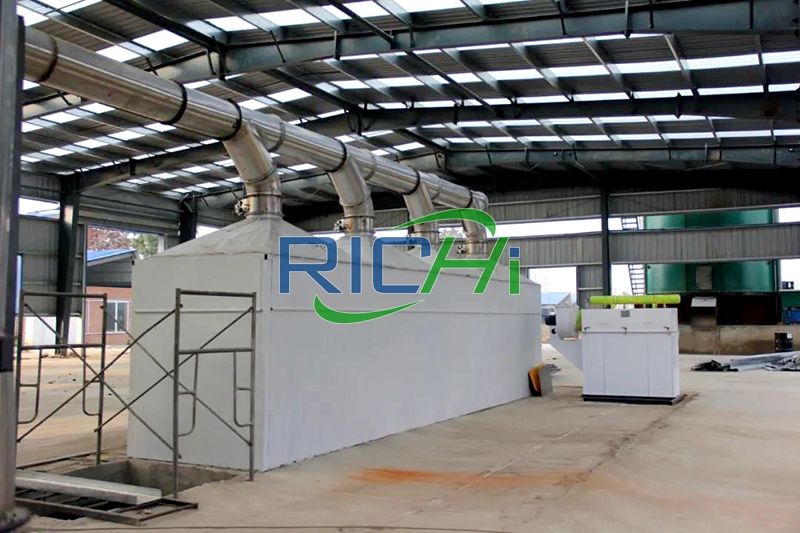
The organic fertilizer production line need go through the processes of fermentation, crushing, mixing, granulation, drying, cooling, screening and packaging.
Among them, the fermentation process and the crushing process are particularly important, providing raw materials for high-quality organic fertilizers. Only organic fertilizers made from good raw materials can pass the quality test and withstand the test of users.
According to the customer’s process requirements, we will customize the design of the organic fertilizer pellet line for the customer.
Main equipment needed in organic fertilizer production line
Generally speaking, the equipment used in the organic fertilizer production line mainly includes turners, pulverzers, mixers, organic fertilizer pellet machines, dryers, coolers, screening machines, packaging scales, bacteria sprayers, conveyors, and fermentation equipment, etc.
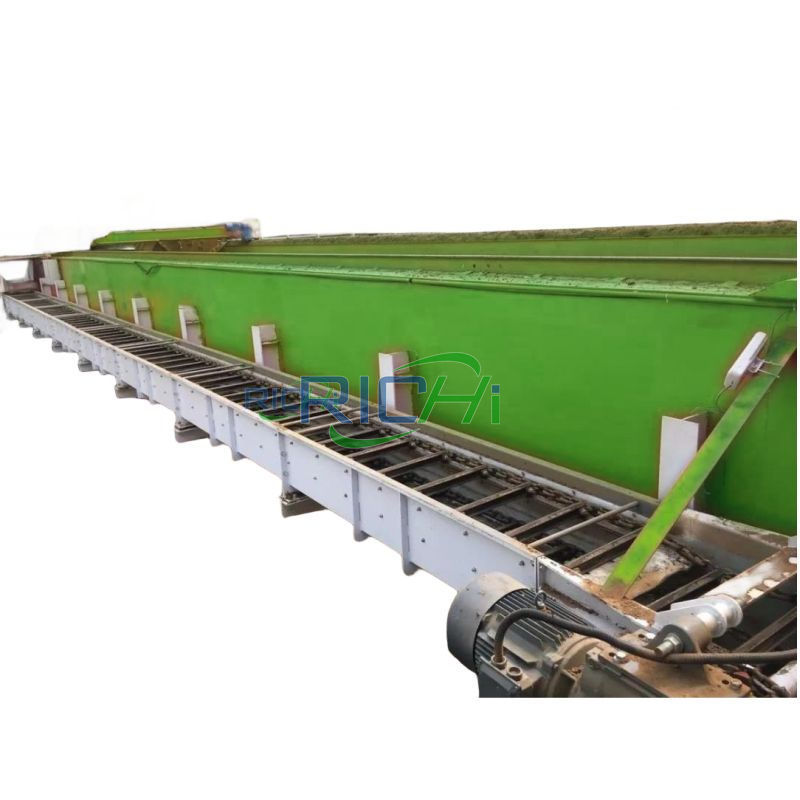
Compost Turner
Saves the area of turning and turning factory, has low infrastructure investment, high fermentation temperature, automatic discharging, high work efficiency.
Turning height:
0.5-2.0 m
Motor:
32-300 KW
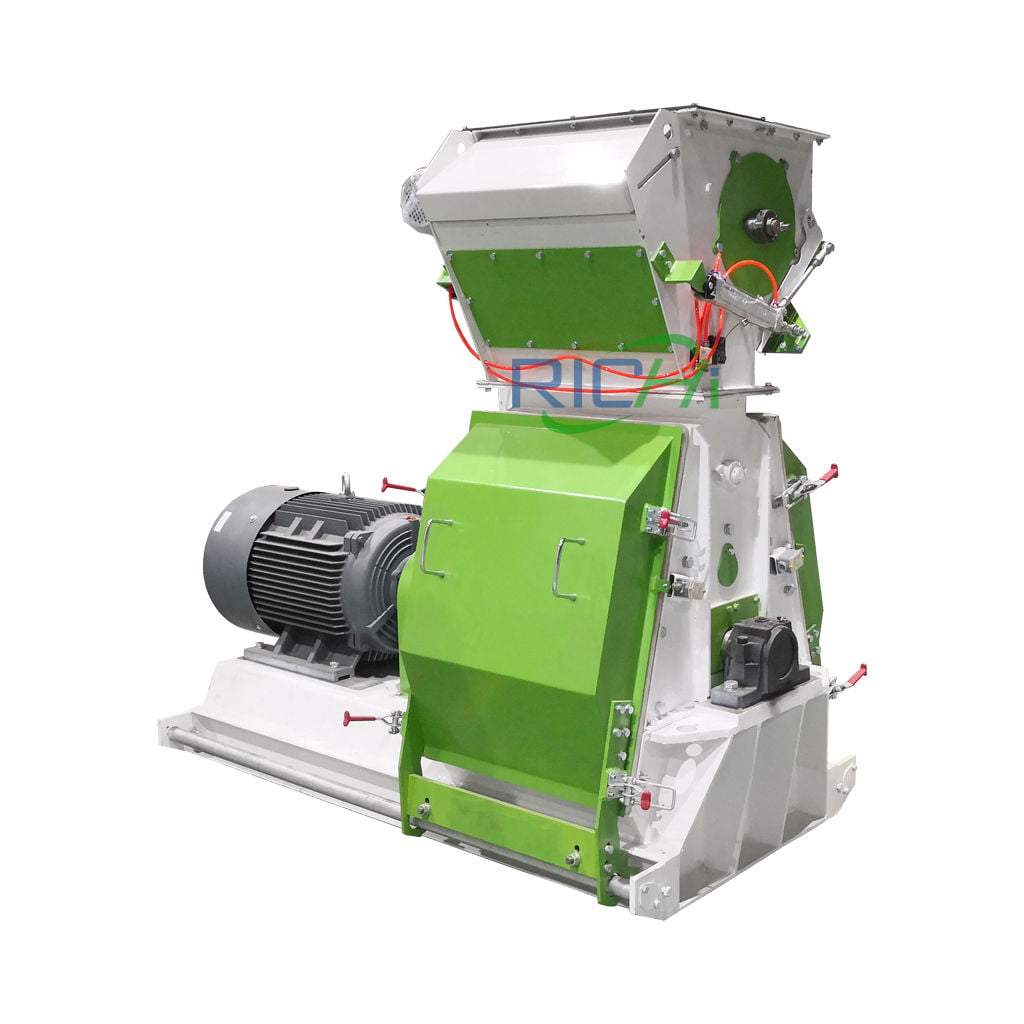
Compost Grinder
Suitable for organic fertilizer raw materials with high moisture content, high viscosity, and difficult to break. There is an inner plate inside the casing and the discharge port.
Capacity:
3-25T/H
Main Power:
30-160KW

organic Fertilizer Mixer
Fertilizer mixer machines are developed for gentle and continuous mixing of separated and free-flowing powders. Compact structure, small footprint.
Capacity:
250-2000 kg/P
Main Power:
4-30 KW

organic fertilizer Dryer machine
used for drying organic fertilizer after pelleting, high heat energy utilization, uniform drying, less cleaning of materials, and easy use and maintenance.
Capacity:
Customized
Rotate Speed:
3-8 R/Min
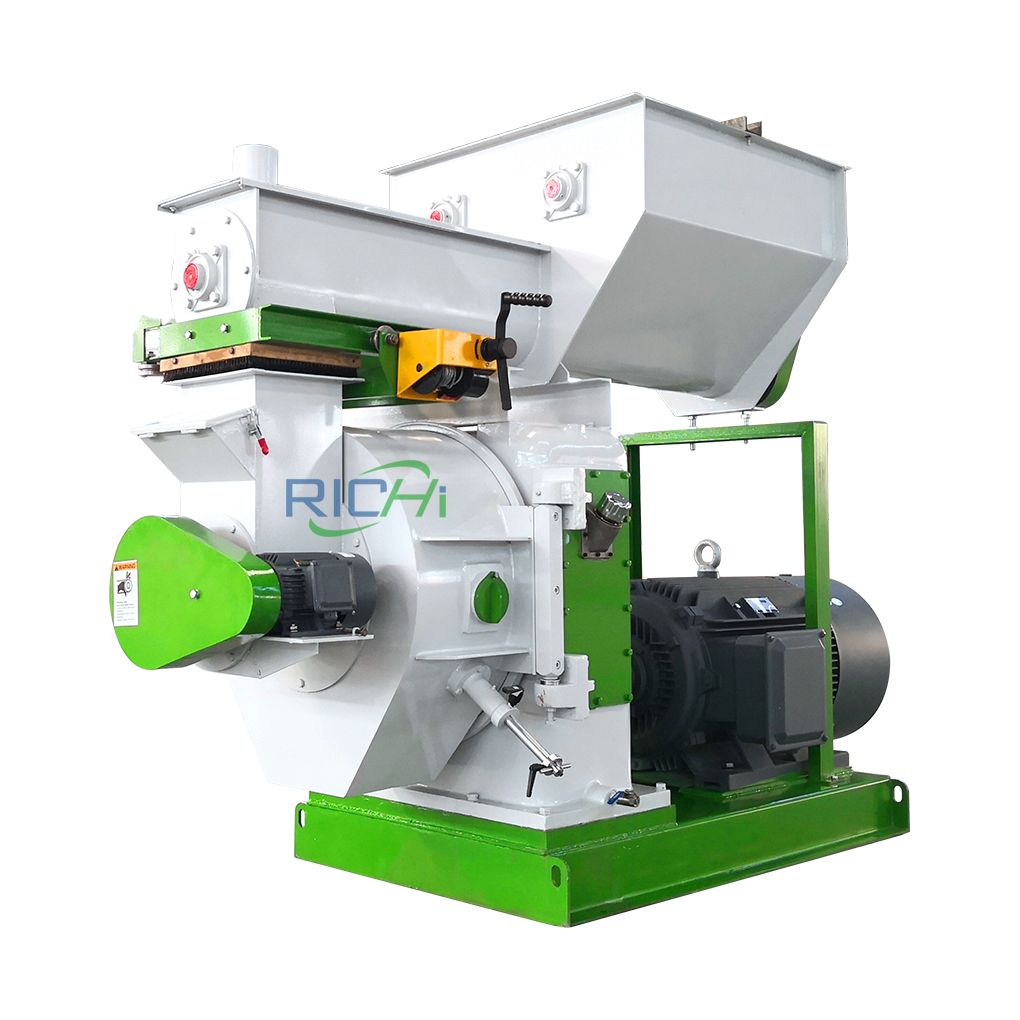
organic fertilizer pellet making machine
The organic fertilizer granulator is based on the principle of mist-wetting and wrapping powder raw materials and returned materials in batches, which promotes the rapid growth of particles and effectively improves the granulation forming rate.
Capacity:
1-12T/H
Main Power:
37-280KW

Pellet Cooler Machine
The cooler passes the 65-85℃ granular organic fertilizer through the optimized design of the material copying plate, evenly covering the cylinder section with full contact with the cooling air, and quickly cooling it to close to normal temperature, so that the product can be packaged in time.
Capacity:
1.5-18T/H
Main Power:
0.75-2.05 KW

vibrating screening machine
It is mainly used for separation of finished organic fertilizer pellets and returned materials. It can also be used to classify finished products so that they can be evenly classified. Easy to maintain and replace, the machine has a simple structure, easy operation and smooth operation.
Capacity::
3-20T/H
Main Power:
1.5-5.5KW
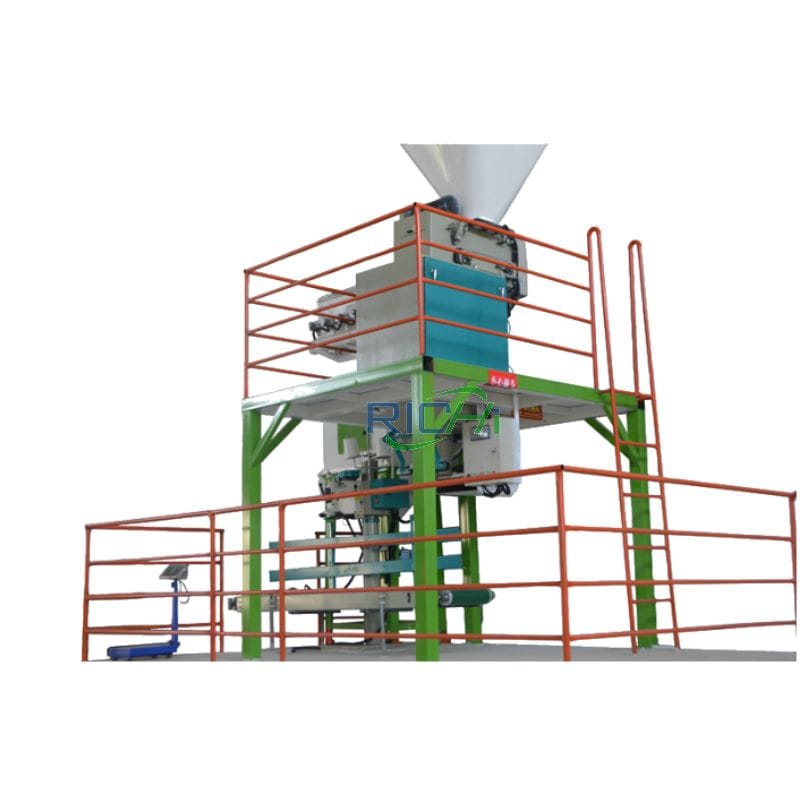
Automatic Bagging Machine
It consists of automatic weighing, packaging sealing, feeding and other parts. It is widely used in the organic fertilizer industry to realize the automation of the entire process from finished product delivery to weighing and packaging.
Speed::
6-12 Bags/Min
Main Power:
1.1-5KW
RICHI organic fertilizer pellet plant equipment is mainly used to recycle and harmlessly collect livestock and poultry manure and residues produced in the livestock breeding and processing industries.
High-quality production equipment and process plans, as well as rigorous organic fertilizer production raw material formulas and management systems, are a strong guarantee for the worry-free operation of organic fertilizer companies.
Organic fertilizer production line projects

Organic fertilizer production line In Vietnam
- Country: Vietnam
- Production: 2500 t/a
- Ingredients: industrial waste
- Organic fertilizer production line price: 80,000 USD

Organic fertilizer production line In Mexico
- Country: Mexico
- Production: 10,000 T/A
- Ingredients: livestock manure
- Organic fertilizer production line price: US$110,000
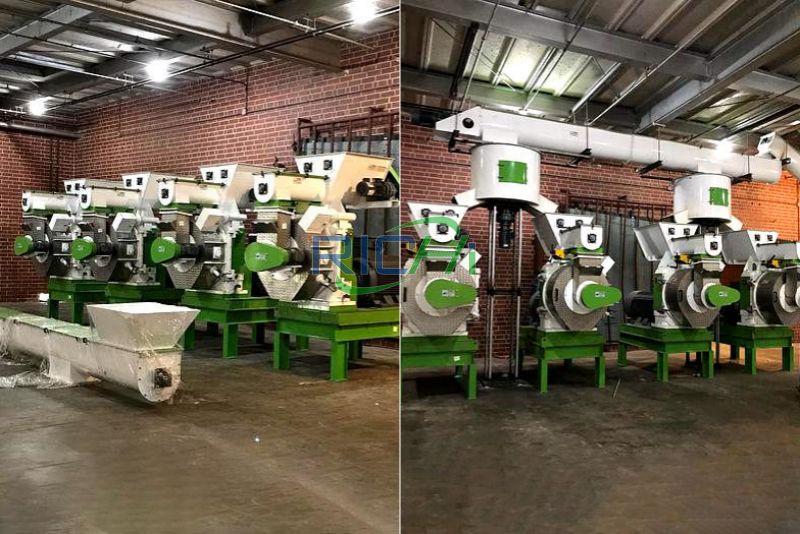
Organic fertilizer production line In United States
- Country: United States
- Production: 50,000 T/A
- Ingredients: poultry litter
- organic fertilizer production plant cost: US$430,000
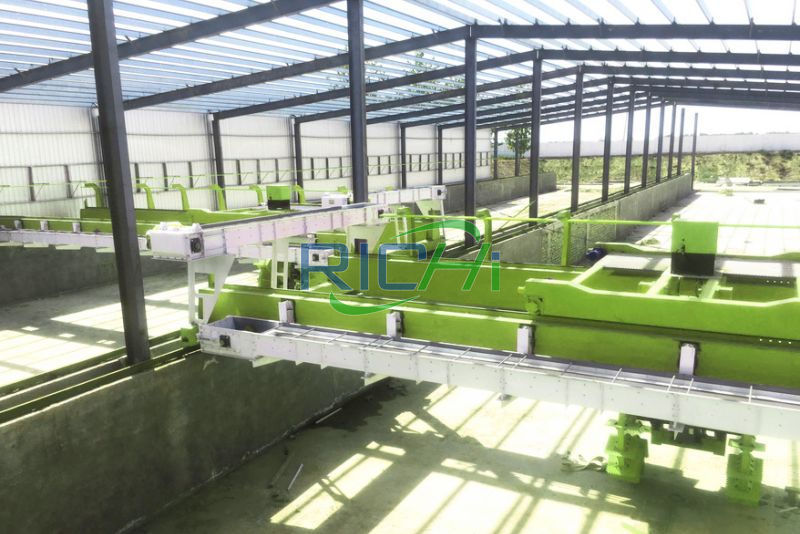
Organic fertilizer production line In Lithuania
- Country: Lithuania
- Production: 35,000 T/A
- Ingredients: food waste
- Organic fertilizer production line price: 410,000USD
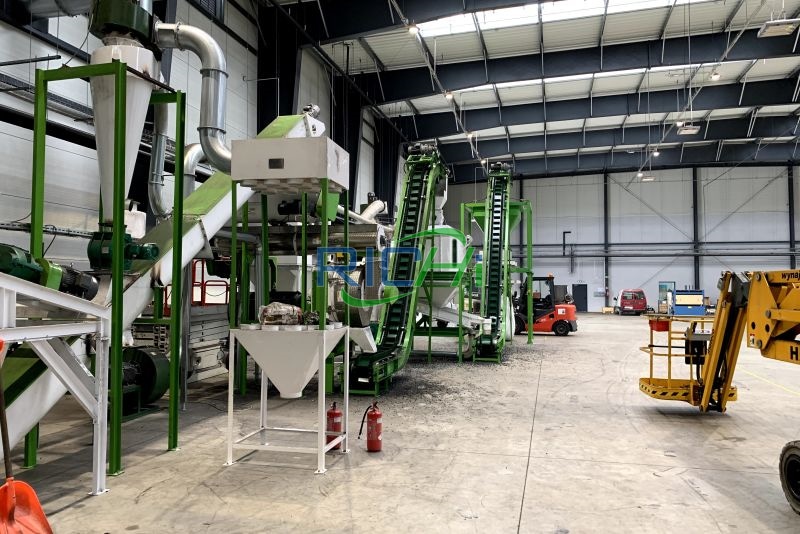
Organic fertilizer production line In Thailand
- Country: Thailand
- Production: 55,000 T/A
- Ingredients: chicken manure
- Organic fertilizer production line cost: 570,000 USD

Organic fertilizer production line In indonesia
- Country: indonesia
- Production: 10,000 T/A
- Ingredients: animal manure, straw
- Organic fertilizer production line cost: 190,000 USD

Bio fertilizer production line In canada
- Country: canada
- Production: 6,000 T/A
- Ingredients: livestock manure, straw and other agri waste
- bio fertilizer plant project cost: $160,000
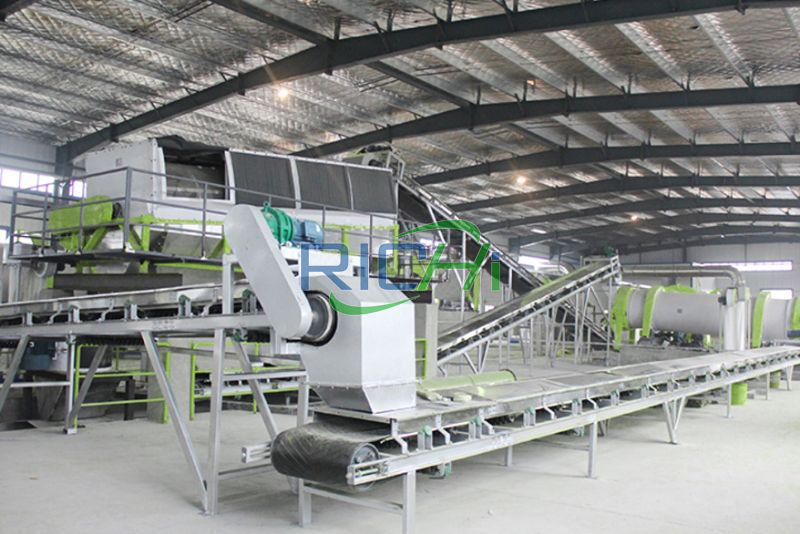
Organic fertilizer production line In Pakistan
- Country: Pakistan
- Production: 30,000 T/A
- Ingredients: cow manure, Bagasse
- Organic fertilizer production line cost: $385,000 USD
Construction process of organic fertilizer production line
If you want to invest in building an organic fertilizer production plant, you need four steps:
- Feasibility analysis.
Before building an organic granules fertilizer production line, a feasibility assessment must be carried out, and experienced units or individuals should be invited to conduct on-site research. Based on the resource status of the farms and organic waste around the factory site, a feasibility study report on factory construction should be prepared.
The main contents of the feasibility study report include: project background, basis for project establishment, market analysis, process technology and production equipment, factory construction conditions and environmental protection (analyzing raw material supply, infrastructure, manpower needs, environmental protection facilities and labor safety, etc.), investment budget estimate (mainly investment in civil engineering and production equipment, process design and technical service fees, working capital, etc.), cost estimate per ton (including material fees, depreciation of fixed assets, energy costs, personnel wages, working capital interest and other costs), investment benefit analysis (including estimation of production profit, investment profit rate, investment repayment period, etc.). - Factory construction and equipment purchase.
After confirming that it can be constructed, it is necessary to start building the factory and select appropriate production equipment. - Trial operation.
After all facilities are prepared, employees are recruited, management systems are formulated, organic fertilizer production processes are designed, production begins, and problems are discovered during the organic fertilizer production process and adjustments are made in a timely manner. - Go through relevant procedures, officially put it into operation, do a good job in publicity, and occupy the market.
Generally, it is necessary to register the enterprise, conduct an environmental assessment, and apply for an organic fertilizer product registration certificate from the government department.
When applying for the registration certificate, you need to carry out testing of organic fertilizer products, assessment of the production conditions of organic fertilizer plants, etc., and submit the enterprise registration certificate, trademark certificate, Product instructions, product certificates and other materials.

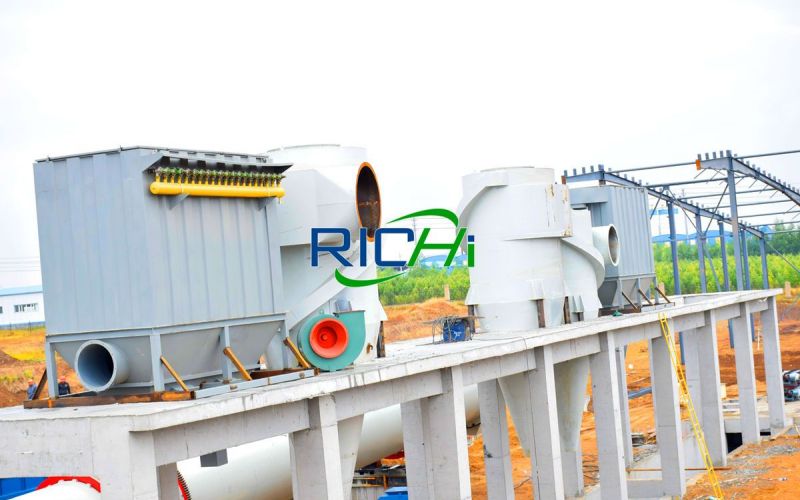
Richi Machinery specializes in the production of organic fertilizer equipment and invests in the construction of organic granules fertilizer produuction lines. Come and have a look at RICHI, it will be a worthwhile trip!
Organic fertilizer production line cost
How much capital is needed to build an organic fertilizer processing plant? The investment for a 1-60T/H organic fertilizer production line is usually between 50,000-3,000,000USD. There are three major investments in running an organic fertilizer factory:
01 Factory building
Factory investment can be divided into four major parts:
- Fermentation workshop
- Production workshop
- Warehouse
- Office
Factory investment mainly includes land price and factory construction costs, which vary from place to place and need to be calculated based on local conditions. Based on the land use of an organic fertilizer production line with a minimum annual output of 5,000 tons, the investment in the factory is about US$70,000 to US$200,000.
02 raw materials
Organic fertilizer raw materials come from a wide range of sources: livestock and poultry manure (chicken manure, cow manure, sheep manure, pig manure, duck manure, rabbit manure, donkey manure, etc.), mushroom residue, straw, bagasse, rice husks and other agricultural wastes.
If the customer has a livestock and poultry farm, the cost of raw materials can be saved. If not, it needs to be purchased nearby. This investment also needs to be calculated based on the actual local conditions.
03 Organic fertilizer production equipment
The price of the organic fertilizer manufacturing equipment is determined based on your output and process. For example, the powder production line with the smallest output has an output of about 4 tons per hour. This equipment is about 40,000 US dollars, and the granular organic fertilizer production line equipment is about 70,000-100,000 US dollars.
The organic fertilizer industry is a sunrise industry. In recent years, many countries have been implementing zero-growth plans for chemical fertilizers, and the requirements for environmental protection have become increasingly strict. Organic fertilizer plants consume livestock and poultry manure and other waste to produce organic fertilizer, which is a real waste-to-energy industry. In this precious industry, investing in organic fertilizers has broad prospects!



How to determine the scale and product plan of an organic fertilizer production line?
The investment scale and product plan design of the organic fertilizer production line need to be formulated based on the following conditions:
- Characteristics of raw material resources
- Local soil conditions
- Local planting structure and main crop varieties
- Investment budget
- Factory site conditions
- The degree of automation of production
- . . .
How to buy equipment for organic fertilizer production line?
How to buy equipment for organic fertilizer production line? What aspects should you pay attention to when purchasing organic fertilizer equipment?
In recent years, the organic fertilizer granulation industry has developed rapidly, and more and more companies have invested in the construction of organic fertilizer production lines. So, what aspects should you pay attention to when purchasing organic fertilizer supporting equipment? Today, RICHI Machinery makes some suggestions for you.
- Determine the size of the organic fertilizer production line and equipment:
For example, how many thousands of tons can be produced annually, or how many tons can be produced per hour, can the price be determined. - Determine the shape of the pellets, which means choosing what kind of granule organic fertilizer machine: powdery, columnar, oblate spherical or standard round.
Commonly used granulating organic fertilizer equipment includes: disc granulator, drum granulator, wet granulator, roller extrusion granulator, flat die granulator, and ring membrane granulator. Among them, the ring-die compress fertilizer pellet machine recommends the MZLH series organic fertilizer pellet mill machine.
According to the characteristics of compound fertilizer, such as high viscosity and difficulty in extrusion, we optimized the equipment in all aspects, improved the auger feeding method, improved the compression ratio of the ring die, and increased the overall output and forming rate. RICHI will make fertilizer pellet machine configuration recommendations based on the customer’s local fertilizer sales market. - Determine the configuration level of compost organic fertilizer making machine:
The configuration level is different, the price of organic fertilizer equipment is different, the amount of labor required is different, and the stable and high yield of organic fertilizer equipment is also different: generally, the higher configuration should be increased, automatic batching device, automatic packaging device, automatic quantitative feeding device, cyclone dust removal and water dust removal. - Determine the type of fertilizer to be produced.
It is compound fertilizer and organic fertilizer equipment or bio fertilizer equipment. With the same output, organic fertilizer and organic fertilizer production line equipment generally take into account the high moisture content and the bacteria are not resistant to high temperatures, so the model is generally larger than the compound fertilizer model.
There are four general types of organic fertilizers, pure organic fertilizers, organic-inorganic compound fertilizers, bio-organic fertilizers, and compound microbial fertilizers. Different types of organic fertilizers have slightly different equipment. - Selection of fermentation turning machine:
The general fermentation forms include stack fermentation, shallow trench fermentation, deep tank fermentation, tower fermentation, and rotary drum fermentation. The fermentation methods are different, and the fermentation organic fertilizer equipment is also different.
Generally, the shallow trough compost turner is more suitable for the principle of aerobic fermentation (the advantages of the shallow trough compost turner are: it is more in line with the principle of aerobic fermentation, it is not easy to form anaerobic, the fermentation is full and complete, and the fermentation speed is fast). - Determine the level of environmental protection requirements:
Places with low environmental protection requirements generally choose heavy dust removal, and the investment in organic fertilizer production line equipment is small; places with high environmental protection requirements generally choose heavy dust removal plus ink dust removal, which can meet national air emission quality standards.


RICHI fertilizer machinery and engineering is green, environmentally friendly, energy-saving and low-carbon, and has many years of research and development history. We can undertake complete sets of bio-organic fertilizer fermentation equipment and organic-inorganic compound fertilizer equipment ranging from 1 t/h to 60 t/h.
As an advocate of pollution-free treatment of organic ecological agriculture, RICHI can provide customers with one-stop services from designing organic fertilizer production lines, field inspections, fertilizer granulation equipment installation, debugging and training, and maintenance based on different requirements of customers, different raw materials, different sites, and local conditions.
FAQs of Organic Fertilizer Production Line

What procedures are required to establish an organic fertilizer production line?
If you want to build an organic fertilizer production line project, you need to go through a lot of local procedures and apply for some documents. Although the situation in each country is different, for customers in most countries, the following are some procedures and steps that may be involved:
- Environmental protection approval:
Before building an organic fertilizer plant, environmental protection approval must be obtained. This usually requires submitting an application to the local environmental protection department and waiting for approval. When applying for environmental protection approval, you need to provide the factory’s floor plan, process flow diagram, waste gas, wastewater treatment plan and other relevant information. - Industrial and commercial registration:
After obtaining environmental protection approval, industrial and commercial registration is required. This usually requires going to the local government department and providing the name, address, business scope and other relevant information of the organic fertilizer production line. - Tax registration:
After completing the industrial and commercial registration, tax registration is required. This usually requires going to the local tax bureau and providing the factory’s business license, tax registration certificate and other relevant documents. - Land use certificate:
After obtaining environmental protection approval and industrial and commercial registration, you need to apply for a land use certificate. This usually requires applying to the local government department and providing the factory floor plan, land use right certificate, construction plan and other relevant information. - Construction planning permit:
After obtaining the land use certificate, you need to apply for a construction planning permit. This usually requires applying to the local government department and providing the factory floor plan, construction plan and other relevant information. - Construction permit:
After obtaining the construction planning permit, you need to apply for a construction permit. This usually requires applying to the local government department and providing the factory’s floor plan, construction plan and other relevant information. - Product quality certification:
After the construction of the organic fertilizer production line is completed, product quality certification is required. This usually requires applying to the local government department and providing the factory’s product samples, production process, quality management system and other relevant information. - Production safety certification:
During the construction of an organic fertilizer plant, production safety certification is required. This usually requires applying to the local government department and providing relevant information such as the factory’s construction plan and construction safety management system. - Operating license:
After the construction of the organic fertilizer production line is completed, you need to apply for an operating license. This usually requires applying to the local government department and providing relevant information such as the factory’s operation plan, production process, and environmental protection measures.
The above are some of the procedures and steps that may be involved in building an organic fertilizer production line. The specific procedures and steps may vary from region to region and country to country. Therefore, it is recommended to consult the relevant local departments before building an organic fertilizer plant to understand the specific application process and requirements.
In addition, for the construction and operation of organic fertilizer production lines, you also need to pay attention to the following issues and precautions:
- Site selection issues:
The site selection of organic fertilizer plants needs to consider factors such as soil fertility, water sources, transportation, etc., as well as the distance from residential areas and environmental protection requirements. - Process issues:
The process flow of an organic fertilizer production line needs to be designed according to different raw materials and product requirements, and suitable process technology and equipment need to be selected. - Quality management issues:
Organic fertilizer factories need to pay attention to quality control and quality management during the production process to ensure product quality and safety. - Environmental protection issues:
Organic fertilizer production lines have high environmental protection requirements and need to take effective environmental protection measures to reduce the emission of waste gas, waste water and waste residue. - Safety issues:
Safety issues need to be paid attention to during the construction and operation of organic fertilizer plants, and a complete safety management system and emergency plan need to be formulated.
In short, building an organic fertilizer production line requires many procedures and permits, and you also need to pay attention to issues and precautions in terms of technology, quality, environmental protection, and safety.
Only with comprehensive consideration and careful implementation can we build a high-quality, high-efficiency, environmentally friendly and safe organic fertilizer production line and contribute to sustainable agricultural development and environmental protection.

I want to start a small organic fertilizer processing business. What is the output suitable for me?
Generally speaking, for small-scale new organic fertilizer production lines, it is appropriate to have an annual output of 10,000 tons (1.5 tons/hour), 20,000 tons (3 tons/hour), or 30,000 tons (4.5 tons/hour). Medium-sized factories have an annual output is 50,000-100,000 tons, and large factories have an annual output of 100,000-300,000 tons.

What raw materials are suitable for the organic fertilizer production line?
There are many raw materials that can be used to process organic fertilizers, which can be divided into the following categories:
- Agricultural waste: such as straw, soybean meal, cotton meal, sugar cane, sawdust, etc.
- Livestock and poultry manure: such as chicken manure, cow manure, sheep manure, horse manure, rabbit manure, donkey manure, duck manure, etc.;
- Industrial waste: such as distiller’s grains, vinegar grains, mushroom residues, kelp residues, phosphorus citric acid residues, cassava residues, furfural residues, amino acid humic acid, oil residues, shell powder, peanut shell powder, etc.;
- Domestic waste: such as kitchen waste;
- Urban sludge: such as river sludge, sewer sludge, etc.
- Biogas slurry and biogas residue: The utilization of biogas slurry has many functions such as fertilizing fields and improving soil, preventing diseases and pests, and increasing yields.

How to use a 5 t/h organic fertilizer production line to process municipal solid waste bio-organic fertilizer?
1. Raw material:
The raw material is domestic waste, which mainly refers to solid waste generated from daily life or activities that provide services for daily life. Including discarded biological products, biological waste, spoiled food, solid particles, garbage, slag, etc.
Benefits of processing municipal solid waste bio-organic fertilizer:
Using municipal solid waste as raw material, it is fermented, turned and processed into bio-organic fertilizer particles. Microorganisms present in the garbage are used to cause biochemical reactions in organic matter to generate a substance similar to humus soil, which can be used as fertilizer and soil improvement. Treating garbage and sludge together or composting garbage and manure can not only reduce environmental pollution, but also improve fertilizer efficiency.
The following takes the design of a 5t/h municipal solid waste bio-organic fertilizer production line that RICHI has done as an example.
2. Process design
The 5T/H urban domestic waste bio-organic fertilizer production line refers to mixing domestic waste with some animal manure, straw and other organic matter, performing compost fermentation, drying and pre-treatment, and then enters the processing workshop for crushing, mixing, granulating, cooling, and packaging After processing in the section, bio-organic fertilizer is made.
This project is an organic fertilizer pellet production line with an output of 5 tons per hour of municipal solid waste. The total equipment power is about 520kw. The workshop covers an area of 3,200 square meters, including a raw material warehouse and a finished product warehouse. The entire line has a compact design, reasonable structure, and meets environmental protection requirements. Can carry out directional design according to customer requirements.
Process flow design: fermentation and turning section → pretreatment section → crushing section → mixing section → granulation and packaging section
- Fermentation and turning section: Pile the mixed ingredients into a strip with a width of 3 meters to 4 meters, a height of 0.8 meters to 1.2 meters, and a length of not less than 3 meters. During the fermentation process, pay attention to proper oxygen supply and turning.
- Pretreatment section: The fermented raw materials are broken up using a special chain crusher for organic fertilizers; then a drum cleaning screen is used to clean impurities in the raw materials, including large wood blocks, stones, agglomerated materials, etc.; and then a drum dryer is used Dry the raw materials to reduce the moisture content of the raw materials to about 20%.
- Crushing section: The materials are sent to the crusher for crushing through the conveying equipment. There is an iron removal device before entering the crusher.
- Mixing section: Through the small material adding hopper, strains and raw materials can be added and mixed in the mixer. After mixing evenly, it enters the next section.
- Granulation section: Use a special ring-die granulator for fertilizers. The appropriate linear speed is more suitable for organic fertilizer granulation. A high-precision gear-driven granulator is used with high transmission efficiency. The ring die adopts a quick-release hoop type.
- Cooling and packaging section: A flip-plate cooler is used to effectively prevent particles from breaking. A vibrating grading screen is equipped under the cooler to screen out some unformed powder. Packaging can be based on the customer’s local sales needs, and a suitable packaging scale can be selected to facilitate customers to sell products. The packaging specifications of the packaging scale are: 20-50kg/bag.

How to use an organic fertilizer production line to process 10t/h cow dung organic fertilizer?
Take a 10t/h cow dung organic fertilizer granulation production line project we have done as an example:
Generally speaking, the cow dung bio-organic fertilizer production line uses cow dung mixed with some straw, rice bran and other organic matter for composting and fermentation. After drying and pre-treatment, it enters the processing workshop and undergoes crushing, mixing, granulating, cooling and packaging sections. After processing, it is made into bio-organic fertilizer.
This project is a cow dung organic fertilizer granulation production line with an output of 10-12 tons per hour. The total equipment power is about 1090kw. The workshop covers an area of 4000 square meters, including raw material warehouse and finished product warehouse; the entire line The design is compact, the structure is reasonable, it meets environmental protection requirements, and it can be designed according to customer requirements.
Process flow: Fermentation and throwing section → Pretreatment section → Crushing section → Mixing section → Granulation and packaging section
- Fermentation and turning section: Pile the mixed ingredients into a strip with a width of 4 meters to 6 meters, a height of 0.8 meters to 1.2 meters, and a length of no less than 3 meters. During the fermentation process, pay attention to proper oxygen supply and turning.
- Pretreatment section: The fermented raw materials are broken up using a special chain crusher for organic fertilizers; then a drum cleaning screen is used to clean impurities in the raw materials, including large wood blocks, stones, agglomerated materials, etc.; and then a drum dryer is used Dry the raw materials to reduce the moisture content of the raw materials to about 20%.
- Crushing section: The materials are sent to the crusher for crushing through the conveying equipment. There is an iron removal device before entering the crusher.
- Mixing section: Through the small material adding hopper, strains and raw materials can be added and mixed in the mixer. After mixing evenly, it enters the next section.
- Granulation section: Use a special ring-die organic fertilizer granulator for fertilizers. The appropriate linear speed is more suitable for organic fertilizer granulation. A high-precision gear-driven organic fertilizer pellet machine is used with high transmission efficiency. The ring die adopts a quick-release hoop type.
- Cooling and packaging section: A flip-plate cooler is used to effectively prevent particles from breaking. A vibrating grading screen is equipped under the cooler to screen out some unformed powder. Packaging can be based on the customer’s local sales needs, and a suitable packaging scale can be selected to facilitate customers to sell products. The packaging specifications of the packaging scale are: 20-50kg/bag.
Cow dung can be made into high-quality organic fertilizer products after fermentation. Cow manure contains 14.5% organic matter, 0.30-0.45% nitrogen, 0.15-0.25% phosphorus, and 0.10-0.15% potassium. Cow manure organic fertilizer is a cold fertilizer with lower organic matter and nutrient content among various livestock. It has fine texture, slow decomposition and low calorific value. It is a slow-acting fertilizer and is suitable for use as base fertilizer.

I want to build a 6t/h pig manure organic fertilizer production line. How to make pig manure into bio-organic fertilizer?
Pig manure contains 15% organic matter, 0.5% nitrogen, 0.5-0.6% phosphorus, and 0.35-0.45% potassium. Because it contains more nitrogen, the ratio of carbon to nitrogen is small, about 14:1. It is generally easily decomposed by microorganisms and releases nutrients that can be absorbed and utilized by crops. Pig manure contains the highest humus, the largest amount of cationic substitution, and the strongest fertility retention capacity.
However, it contains more water and has fewer cellulolytic bacteria. Mixing a small amount of horse manure and applying it to inoculate cellulolytic bacteria can greatly increase the fertilizer efficiency.
Below, RICHI will enumerate for you a design plan for a 6-ton pig manure organic fertilizer production line that we have made. We hope it will be helpful to you.
6 t/h pig manure organic fertilizer granulation production line process flow:
Through the following series of processes, 6t/h pig manure bio-organic fertilizer will be obtained.
Use pig manure to mix some straw, straw, wood chips or household kitchen waste and other organic matter, carry out compost fermentation, dry and pre-treat, and then enter the processing workshop, after crushing, mixing, granulating, cooling, and packaging sections. , made into bio-organic fertilizer.
- Fermentation and turning: Pile the mixed ingredients into a strip with a width of 4 meters to 6 meters, a height of 0.8 meters to 1.2 meters, and a length of no less than 3 meters. During the fermentation process, pay attention to proper oxygen supply and turning.
- Pretreatment: The fermented raw materials are crushed using a special chain crusher for organic fertilizers; then a drum cleaning screen is used to clean the impurities in the raw materials, including large wood blocks, stones, agglomerated materials, etc.; and then drum drying is used Use a machine to dry the raw materials and dry the moisture content of the raw materials to about 20%.
- Crushing and mixing: The materials are sent to the crusher through the conveying equipment for crushing. Through the small material adding hopper, the bacteria and raw materials can be added and mixed in the mixer.
- Granulation: Use a special ring-die granulator for fertilizers. The appropriate line speed is more suitable for organic fertilizer granulation. A high-precision gear-driven granulator is used with high transmission efficiency. The ring die adopts a quick-release hoop. type.
- Finally, a cooler is selected to effectively prevent pellets breakage. A vibrating grading screen is equipped under the cooler to screen out some unformed powder. Packaging can be based on the customer’s local sales needs, and appropriate packaging scales can be selected to facilitate customers to sell products.
Through the scientific processing of fertilizer fermentation, throwing and granulation, pig manure can be made into high-quality organic fertilizer, achieving zero pollution, zero emissions, and no odor, and turning waste into treasure.
With the development of the livestock and poultry industry and people’s demand for pollution-free green food, the demand for bio-organic fertilizers made from livestock and poultry manure will increase, and the market development prospects are very promising.

How to design a 1-2 t/h sheep goat manure organic fertilizer production line?
Take a sheep manure bio-organic fertilizer pellet production line project with an output of 1-2t/h per hour as an example. The main raw material is sheep manure, and other auxiliary materials can be organic matter, such as straw, sawdust, etc.
Introduction to sheep manure process flow:
The single-line 420 sheep dung bio-organic fertilizer production line refers to mixing sheep dung with some organic matter such as straw, straw, wood chips or household kitchen waste, composting and fermenting, drying and pre-processing, and then entering the processing workshop for crushing, mixing and production. After processing in the granulation, cooling and packaging sections, bio-organic fertilizer is made into bio-organic fertilizer.
This project is a sheep manure organic fertilizer granulation production line with an output of 1-2t/h tons per hour. The total equipment power is about 280kw. The workshop covers an area of 2400 square meters, including raw materials. Warehouse and finished product warehouse; the entire line has a compact design, reasonable structure, meets environmental protection requirements, and can be designed according to customer requirements.
Process flow: fermentation and throwing section → pretreatment section → crushing section → mixing section → granulation and packaging section
- Fermentation and turning section: Pile the mixed ingredients into a strip with a width of 1.5 meters to 2 meters, a height of 0.8 meters to 1.2 meters, and a length of no less than 3 meters. During the fermentation process, pay attention to proper oxygen supply and turning.
- Pretreatment section: The fermented raw materials are broken up using a special chain crusher for organic fertilizers; then a drum cleaning screen is used to clean impurities in the raw materials, including large wood blocks, stones, agglomerated materials, etc.; and then a drum dryer is used Dry the raw materials to reduce the moisture content of the raw materials to about 20%.
- Crushing section: The materials are sent to the crusher for crushing through the conveying equipment. There is an iron removal device before entering the crusher.
- Mixing section: Through the small material adding hopper, strains and raw materials can be added and mixed in the mixer. After mixing evenly, it enters the next section.
- Granulation section: Use a organic waste ferilizer granulator for fertilizers. The appropriate linear speed is more suitable for organic fertilizer granulation. A high-precision gear-driven fertilizer pellet press is used with high transmission efficiency. The ring die adopts a quick-release hoop type.
- Cooling and packaging section: A flip-plate cooler is used to effectively prevent particles from breaking. A vibrating grading screen is equipped under the cooler to screen out some unformed powder. Packaging can be based on the customer’s local sales needs, and a suitable packaging scale can be selected to facilitate customers to sell products. The packaging specifications of the packaging scale are: 20-50kg/bag.
Sheep manure contains 24-27% organic matter, 0.7-0.8% nitrogen, 0.45-0.6% phosphorus, and 0.4-0.5% potassium.
Sheep are ruminants, but they rarely drink water, so their feces are dry and fine, and the amount of feces excreted is also very small. Sheep manure is relatively rich in nutrients. It contains both effective nutrients that are easily decomposed and can be absorbed and utilized by crops, and slow-acting nutrients that are not easily decomposed. It is a good fertilizer that combines fast and slow fertilizer effects.

How to design a 5 t/h chicken manure organic fertilizer production line?
Chicken manure bio-organic fertilizer refers to using chicken manure as the main raw material, mixed with some other organic matter, fermented, thrown, pre-treated, and finally granulated to become bio-organic fertilizer.
After fermentation, chicken manure is a relatively high-quality organic fertilizer. The nutrient content of chicken manure is very rich. It contains a large amount of organic matter and a high content of three elements of nutrients. The organic matter content is 25.5%, nitrogen is 1.63%, and phosphorus is 1.63%. It contains 1.54% potassium, 0.85% potassium, and 11% carbohydrates, so chicken manure is an important organic fertilizer.
Generally speaking, to process 5t/h chicken manure organic fertilizer, the process flow of the organic fertilizer production line is usually: fermentation and throwing section → pretreatment section → crushing section → mixing section → granulation and packaging section
- Fermentation and turning section:
For an aerobic fermentation, pile the mixed ingredients into a strip with a width of 1.5 meters to 2 meters and a height of 0.8 meters to 1.2 meters and a length of no less than 3 meters.
During the fermentation process, pay attention to proper oxygen supply and turning the pile (the temperature rises to 75°C or above), the temperature should be controlled at around 65°C. Too high a temperature will affect nutrients. It takes 2 days to heat up, 3 days to become odorless, 7 days to become loose, 9 days to become fragrant, and 10 days to become fertilized.
The secondary fermentation is the so-called post-aging stage, and can also be called secondary fermentation. After 7 days, the material can be decomposed and enter the post-aging stage. Then enter the pre-treatment and workshop granulation stage. - Pretreatment section:
Chicken manure bio-organic fertilizer pre-treatment section: The fermented chicken manure is fermented and stored for 7 days before being crushed, and the fermented organic fertilizer raw materials are crushed, screened and dried. - Crushing section:
In the crushing section of chicken manure bio-organic fertilizer, the dried materials must be sent to the crusher for crushing through conveying equipment. An iron removal device is equipped before entering the crusher. - Mixed processing section:
Through the small material adding hopper, bacteria and raw materials can be added and mixed in the mixer. After mixing evenly, it enters the next section. - Granulation and packaging section:
The chicken manure bio-organic fertilizer is evenly fed by the granulator feeding auger in the granulation section for continuous granulation by the granulator. The granulated granules enter the cooler for cooling. The cooled finished granules are automatically weighed and packaged, transported to the warehouse. Chicken manure bio-organic fertilizer uses a packaging scale in the packaging section.
According to the customer’s local sales needs, a suitable packaging scale is selected to facilitate customers to sell the product. There are usually two specifications: small bags and ton bags.
The packaging specifications of the small bag packaging scale are: 20-50kg/ Packaging specifications for bags and ton bags are: 500-1000kg/bag. The packaging scale has a high degree of automation and high packaging accuracy. The weighing system uses sensor measurement, which has high sensitivity and strong anti-interference ability.

How to plan and layout the 10-20 t/h large-scale organic fertilizer production line?
The production of organic fertilizer is a project of recycling agricultural waste. Organic fertilizer production enterprises can be large or small, and there are no standardization requirements. Generally speaking, the planning layout of a 10-20 t/h large-scale organic fertilizer pellet plant includes the following partitions:
1) Factory gate and side door
The factory gate is the channel for company business transactions and finished product sales. The side door is the entrance channel for stinky raw materials such as feces. The side door is usually close to the fermentation workshop and raw material warehouse, in an inconspicuous location in the factory area.
2) Staff living area
The place where employees live, stay, relax and have fun. Staff living areas are generally far away from production areas. Vegetables, flowers, trees, etc. can be planted in the living area, which is pleasing to the eye.
3) Equipment storage area
Production workshop equipment layout
4) Raw material warehouse
5) Fermentation workshop
6) Semi-finished product storage area
Semi-finished products here refer to the area where the raw materials are temporarily accumulated and stored while waiting for processing after harmless fermentation.
7) Processing workshop
8) Finished product warehouse
What needs to be mentioned is that the raw material warehouse, fermentation workshop, semi-finished product storage area, and finished product warehouse in the processing workshop should be closely connected, which can greatly improve the work efficiency of the enterprise.
9) Office area
The office area should be set up near the living area to facilitate work and rest.
10) Planting demonstration area
The ecological formula fertilizer produced by the company itself can be tested in its own test field to understand the application effect of the fertilizer in real time.
Organic fertilizer is a kind of fertilizer made from natural organic matter as the main raw material. It has the advantages of environmental protection, safety and high efficiency. As people have higher and higher requirements for the quality of agricultural products, the demand for organic fertilizers is also increasing. In order to meet market demand, it is imperative to build a modern organic fertilizer production line.

Can you build a digestate organic fertilizer production line? What is its process?
Yes, we can provide the design and manufacturing of digestate organic fertilizer granule production line.
Biogas residue organic fertilizer is the residue after crop straw, grass, livestock and poultry manure, etc. are fermented by microorganisms to produce biogas in a biogas tank. Rich in organic matter and essential nutrients. Biogas ferments slowly, consumes less organic matter, and loses less nitrogen, phosphorus, and potassium. The nitrogen recovery rate reaches 95% and the potassium recovery rate is over 90%.
About 2Kg of functional bacteria are added to the biogas water and then used as flush fertilizer for dry land top dressing; the residue fertilizer is used as paddy field base fertilizer. If it is used as dry land base fertilizer, it should be re-soiled after application. After the biogas fertilizer leaves the pond, it should be fermented by microorganisms for about 12 days before use. Stirring tools, weighing equipment, conveying equipment, etc. required during production.
Processing process of organic fertilizer production line:
1. Preparation
- (1) Biogas residue: Because there are two biogas production methods in China, dry and wet, the moisture content of biogas residue is usually around 40%-70%.
- (2) Accessories: Accessories with a moisture content of no more than 10% (such as straw powder, rice bran, peanut shell powder, etc.) are mainly used to adjust the air permeability of the biogas residue during fermentation. If the air permeability of the biogas residue is good, it may not be added.
- (3) Biological fermentation bacteria: Use the weighed bacteria and auxiliary materials and mix them evenly in a ratio of 1:10 (the purpose is just to expand the volume of the bacteria so that it can be spread evenly on the biogas residue), and then add the required biological bacteria Weigh and increase the processing digestate at a ratio of 1:10,000 (one kilogram treats ten tons).
2.Production process design
- (1) If the moisture content of the biogas residue is above 70%, it can be mixed with the auxiliary materials in a weight ratio of 3:1, add 1% quicklime and stir, then add the expanded volume of microbial agent into the biogas residue, stir and stack evenly That’s it.
- (2) The moisture content of the stirred fermentation material should be controlled at about 60% (grip it gently with your hands to form a ball, and loosen it to make three or five cracks. At least make sure that you hold it firmly with your hands so that no water drips from between your fingers).
- (3) Stack the stirred fermentation materials with a height of about 1.2m, a width of about 2m, and no limit to the length.
- (4) After fermentation for 24-48 hours, the temperature can reach above 55℃, and the deodorizing effect can be achieved three days after the temperature rises.
- (5) After stacking and fermenting for 15-20 days, it can be used as bio-organic fertilizer.

I am from China and I have a lot of medicinal residue waste resources. Can you design a medicinal residue organic fertilizer production line?
At present, medicinal residue organic fertilizer is very suitable for countries such as China and South Korea that use traditional Chinese medicinal materials. Especially China. Because China is a big country in traditional Chinese medicine and produces more than a thousand varieties of traditional Chinese medicine. Tens of thousands of tons of dried Chinese herbal medicine are used in production every year, and the extracted Chinese medicine residue accounts for more than 80% of the total.
A large amount of Chinese medicine residue is almost poured into the garbage dump, which wastes resources, pollutes the environment, and occupies a large area. land. Most of the organic matter of traditional Chinese medicine residues is suitable for organic fertilizer production, so any traditional Chinese medicine residues can be used as raw materials for organic fertilizer production, turning waste into treasure.
The production method of medicinal residue organic fertilizer, the steps are as follows:
- Crushing of raw materials: crush the dregs produced during production into 10 to 50 meshes through a pulverizer;
- Ingredients: Put the crushed medicinal residue, livestock and poultry manure, fermentation bacteria, and water in step 1 into a mixer according to the ratio of 55 to 70:15 to 25:2 to 4:10 to 30 and mix evenly;
- High-temperature equipment fermentation: Put the mixed materials in step 2 into the high-temperature fermentation tank, maintain the temperature at 60-90°C, and ferment for 2-15 hours to complete the fermentation;
- Aging: Place the fermented material in step 3 in the aging room, keep the temperature at 60-70°C under ventilation, and age. Secondary fermentation will be performed during the aging process, which will last for 3 to 6 days;
- Re-batching: Mix the aged materials in step 4 with nitrogen, phosphorus and potassium in a mixer according to 25~40:30~45:10~20:10~20, then put them into a grinder and grind them for 50~ 100 mesh;
- Granulation: Put the raw materials crushed in step 5 into the fertilizer pellets processing machine, and granulate at a temperature of 50-60°C, keeping the moisture content of the material at 8-15%;
- Drying: In the fertilizer dryer, maintain ventilation, control the temperature to 100-120°C, dry for 20-40 minutes, and the material moisture is 3-5%;
- Cooling: Put the dried materials in step 7 into the cooling machine, and cool to room temperature under ventilation conditions;
- Finished product: Screen the cooled material in step 8 through a screening machine to keep the particles between 1 and 4.5mm, and then package it.
The equipment required for the medicated residue organic fertilizer production line includes: fermentation compost turner, pulverizer, horizontal mixer, organic fertilizer granulator, drum dryer, cooler, screening machine, automatic quantitative packaging machine, belt conveyor, etc.

How to design the process of sludge organic fertilizer production line? What services can you provide?
With the rapid development of social economy and the acceleration of urbanization, the discharge of industrial wastewater and domestic sewage is increasing, and the production of sewage sludge has also increased sharply. Using sludge and domestic waste to process organic fertilizers can find a way out for waste utilization, relieve the pressure caused by waste siege, and turn misplaced waste into resources.
- Favorable conditions for project construction
The development of bio-organic fertilizer production is not only in line with the industrial policies of various countries around the world, but also has rich raw materials, wide sources, and a broad market. It basically has the guidelines for large-scale production and rapid advancement.
- Comply with industrial policies
This project is an agricultural project and is in line with the policy trends of many developing countries to support agricultural industrialization and increase farmers’ income. The products produced all meet the national fertilizer requirements for pollution-free vegetables and aquatic products. It is a project supported by many national governments.
- Obvious market advantages
Organic fertilizer is a new type of fertilizer recommended by many countries. It has strong fertility, low cost and no pollution. It is an essential production resource for the production of high-quality pollution-free agricultural products.
Process flow description
- Mix various raw materials and decomposition agents and stack them for fermentation. During the fermentation process, temperature and humidity must be monitored and piles turned manually.
- After full fermentation, the material can be transported to the crusher for crushing.
- The crushed material is sent to the mixer, and appropriate proportions of trace elements or strains are added.
- It is necessary to make powdered organic fertilizer. This step can be omitted. If granulation is required, an organic fertilizer granulator can be used. After the crushed raw materials are made into granules, they are then cooled and dried through a cooler and dryer. After drying, the qualified finished products are screened out by the screening machine and transported to the packaging machine for packaging, which becomes qualified organic fertilizer products.
Technical characteristics
- Add water-absorbing auxiliary materials to the sludge, such as domestic waste, broken crop straw, branches, leaves and sludge fertilizer with low moisture content after backfill fermentation: generally sludge accounts for 60%-70%, domestic waste and other water-absorbing auxiliary materials Accounting for about 30%-40%.
- Inoculate biological compound fermentation bacteria: Adding biological composite fermentation bacteria to the sludge is generally added before fermentation. The fermentation bacteria are evenly mixed with the sludge through the stirring and stirring of a turning machine. The amount of compound fermentation bacteria added is generally 0.1%-0.3 %about. Just add fermentation bacteria to the sludge.
- Sewage sludge organic fertilizer contains strong organic matter with nutrients necessary for plant growth. It has a good effect in improving the physical and chemical properties of soil. It is the main source of energy and nutrients for soil microorganisms. It is an important measure to reduce agricultural costs and is an important tool for maintaining and It is an important step in promoting soil nutrient balance and fertilizing the soil.
It can significantly increase the content of soil organic matter, significantly reduce the leaching of nitrogen in the soil, weaken the pollution of groundwater by inorganic fertilizers, and play an important role in regulating soil water, fertilizer, gas, heat conditions and It has a promoting effect on fertilizer and water retention capabilities, especially for soil with poor structure. It is a rare amendment.
The services we provide include:
- Provide a full set of sludge treatment technologies and processes;
- Provide individual factory planning and product sales channels;
- Provide a complete set of organic fertilizer production line equipment purchase lists and quotations.
organic fertilizer production line video

In the 21st century, with the continuous improvement of people’s living standards, people have also put forward new requirements for food quality. “Pollution-free” has become a measure to measure the quality and safety of food and vegetables. Therefore, the application of organic fertilizers in green food is favored by consumers and provides broad development space for organic fertilizers.
With the rapid development of industry, agriculture and cities, a large amount of urban garbage, waste from livestock and poultry farms and livestock and poultry manure have brought great harm to the surrounding ecological environment and disease prevention and control work.
Therefore, using livestock and poultry manure, domestic garbage and waste sludge to produce organic fertilizer not only beautifies the environment, but also turns waste into treasure. It is a project promoted by countries around the world.
In addition, the various fertilizer products produced by organic fertilizer factories are products with greater market demand, and these products have sustained market demand. For example, many breeding and planting projects have year-round demand for fertilizers. , and is basically not affected by many factors in the market.
A standard-scale organic fertilizer production line can produce more than 1,000 tons per year, which brings a lot of actual revenue. Moreover, the market price of organic fertilizers is not low. Basically, there is no need to worry about sales channels and prices.


Customize your organic fertilizer production line
RICHI Machinery is a 30-year-old enterprise group that integrates the R&D, manufacturing, engineering design and installation of complete sets of feed machinery projects, complete sets of organic fertilizer production projects, complete sets of compound fertilizer projects, complete sets of biomass pellet equipment, steel plate silos, and light steel structure workshops.
As the company’s key product segment, organic fertilizer production lines and equipment have been widely praised and recognized by organic fertilizer companies, farms, and large-scale breeding groups.
Equipped with complete sets of organic fertilizer equipment with excellent product quality, it can help breeding companies reduce many costs such as pollution treatment and personnel management. It also creates another new driving force for wealth growth in the business sector of breeding companies!
In order to completely eliminate customers’ worries about organic fertilizer production line projects, Richi Machinery provides global customers with a one-stop solution for organic fertilizer production from civil construction, manufacturing, installation, training, production to sales, and harmlessly decontaminates livestock and poultry breeding waste resource processing, and provide guarantee for the development of the organic fertilizer industry.